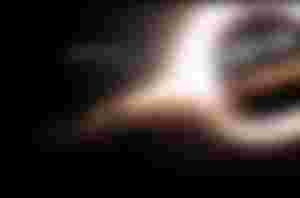
Those who wanted to know about TON 618 Galaxy. It is a very distant and extremely bright quasar; Technically a super-bright, wide-absorbing line, radio-loud quasars located near the constellation Venus of the galaxy north of the galaxy. TON 617 is currently the largest black hole in the observable universe with 6 billion solar masses.
Observational history
Since the quasar was not recognized until 1973, its nature was unknown when it was first observed in a survey of blue stars (mainly white dwarfs) away from the Milky Way in 1956. It appeared to be "definitely purple" on a photographic plate taken with a 0.7-meter Schmidt observatory at the Tonantzintla Observatory in Mexico, and was listed as 617 in the Tonantzintla catalog.
In 1960, a radio survey in Bologna discovered radio emissions from the TON617, indicating that it was a quasar. Marie-Helen Ulrich then observed the optical spectrum of the TON617 at the McDonald's Observatory, showing the general emission line of a quasar. From the redshift of the line, Ulrich speculates that the TON 617 was a long way off, and that this is one of the brightest quasars known
Huge black hole
As a quasar, the TON617 is thought to be a disk of intense hot gas orbiting a supermassive black hole in the center of a galaxy. The light produced by the quasar is estimated to be 10.4 billion years old. The surrounding galaxy is not visible from Earth, as the quasar itself transcends it. With an extreme magnitude of -30.6, it is as bright as 4 × 1040 watts, or as bright as 140 trillion suns, making it one of the brightest objects in the known universe.
The size of the broad-line region can be determined from the brightness of the quasar radiation. From the size of the region and the speed at which it is orbiting, the law of gravitation shows that the mass of the black hole in TON 617 is equal to 6 billion solar masses. With this high mass, TON 617 falls into the new classification of supermassive black holes. The Schwarzschild radius of this massive black hole is 1,300 AU (about 390 billion kilometers in diameter, 40 times the size of Neptune's orbit).
